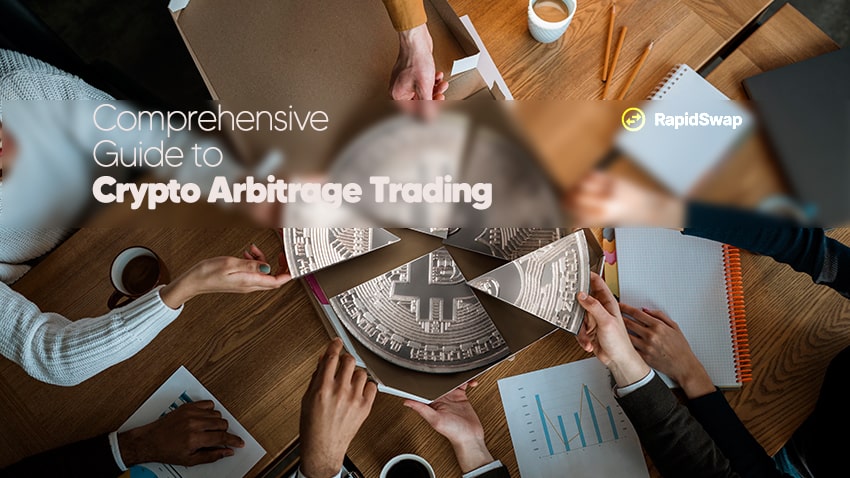Cryptocurrency has revolutionized the financial landscape, offering a multitude of investment opportunities that were unimaginable just a few years ago. Among these, crypto arbitrage trading stands out as an intriguing yet potentially lucrative venture. But what exactly is crypto arbitrage trading, and how can you effectively engage in it? This guide will delve into the nuances of crypto arbitrage, explaining the concept, its operation, and the strategies involved, so you can navigate this complex trading practice with confidence.
What Is Crypto Arbitrage Trading?
Crypto arbitrage trading is a strategy that involves taking advantage of price differences for the same cryptocurrency across different exchanges. The fundamental idea is to buy a cryptocurrency at a lower price on one exchange and sell it at a higher price on another, thereby making a profit from the price disparity. Think of it as purchasing a product in one market where it’s undervalued and selling it in another where it commands a higher price—only in this case, the product is a digital asset.
Why Do Price Variations Occur?
The price of a cryptocurrency on an exchange is dictated by the supply and demand dynamics specific to that platform. Since each exchange operates independently with its own user base and trading volume, these factors can cause significant price variations for the same cryptocurrency across different exchanges.
For example, a high demand for Bitcoin on one exchange might drive its price up, while on another exchange with less demand, the price may remain lower. These discrepancies are the cornerstone of arbitrage opportunities, allowing traders to capitalize on the differences.
How Does Crypto Arbitrage Trading Work?
Identifying Opportunities
The success of crypto arbitrage lies in the ability to identify price differences across exchanges in real-time. Traders need to monitor multiple platforms continuously, looking for significant price variations for specific digital assets. This vigilance is essential, as the window for arbitrage opportunities can be fleeting.
Factoring in Fees
Before jumping into a trade, it’s crucial to consider the transaction fees imposed by each exchange. Fees can vary significantly and may include trading fees, withdrawal fees, and deposit fees. These costs can erode potential profits, so successful arbitrage traders always calculate the net gain after accounting for all fees to ensure the trade remains profitable.
Execution of Trades
Speed is of the essence in arbitrage trading. Once a price difference is identified, the trader must quickly buy the cryptocurrency on the cheaper exchange and sell it on the more expensive one. The volatile nature of the crypto market means that prices can change rapidly, and any delay in executing the trade can reduce or eliminate the profit margin.
Utilizing Technology
Given the fast-paced environment of crypto markets, many traders leverage technology to enhance their efficiency. Crypto arbitrage bots are automated programs designed to scan multiple exchanges simultaneously, identify arbitrage opportunities, and execute trades within milliseconds. These bots can operate around the clock, significantly increasing the chances of capturing profitable opportunities that might be missed manually.
Understanding the Risks Involved
While crypto arbitrage can be profitable, it’s not without risks. The primary risks include:
- Market Volatility: Cryptocurrency prices can fluctuate wildly within seconds, making it difficult to execute a trade at the expected profit margin.
- Transaction Delays: Transfers between exchanges can take time, and during this period, the price differential may narrow or disappear entirely.
- Liquidity Issues: Some exchanges may have lower liquidity, meaning there may not be enough volume to buy or sell the cryptocurrency at the desired price.
Due to these risks, it’s crucial for traders to thoroughly understand market dynamics and have contingency plans in place.
Types of Crypto Arbitrage Strategies
Crypto arbitrage trading isn’t a one-size-fits-all approach; there are various strategies that traders can employ depending on market conditions and individual goals. Here are some common types:
- Spatial Arbitrage: The traditional form of arbitrage, where a trader buys a cryptocurrency on one exchange and sells it on another where the price is higher.
- Triangular Arbitrage: This strategy involves exploiting price discrepancies between three different cryptocurrencies. For example, a trader might exchange Bitcoin for Ethereum, Ethereum for Ripple, and then Ripple back to Bitcoin, profiting from the relative price differences along the way.
- Statistical Arbitrage: This approach uses mathematical models to predict price movements and identify arbitrage opportunities. It’s a more complex strategy that often involves high-frequency trading and algorithmic models.
- Decentralized Arbitrage: With the rise of decentralized exchanges (DEXs), arbitrage opportunities have expanded. Traders can exploit price differences between decentralized and centralized exchanges or between different DEXs.
Is Crypto Arbitrage Right for You?
Crypto arbitrage trading offers a unique opportunity to profit from the inefficiencies in the cryptocurrency markets. However, it requires a keen understanding of market mechanics, quick decision-making, and a solid grasp of the associated risks. Whether you’re a seasoned trader looking to diversify your strategies or a newcomer eager to explore the possibilities, crypto arbitrage could be a rewarding endeavor—provided you approach it with the right tools, knowledge, and caution.

